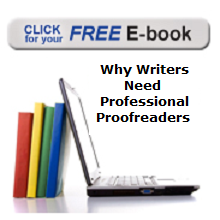 Don’t believe what you’ve heard or seen. The hyphen is not dead. Its use has been declining, but mostly in the realm of joining common nouns. In 2007, the Shorter Oxford English Dictionary eliminated hyphens from 16,000 entries. Bumble-bee became bumblebee, science books mention test tube instead of test-tube, and cry-baby joined to form one word.
Don’t believe what you’ve heard or seen. The hyphen is not dead. Its use has been declining, but mostly in the realm of joining common nouns. In 2007, the Shorter Oxford English Dictionary eliminated hyphens from 16,000 entries. Bumble-bee became bumblebee, science books mention test tube instead of test-tube, and cry-baby joined to form one word.
The first recorded hyphen showed up in the work of Dionysius Thrax, the original grammarian. Back then, it was a tie-like (‿) sign used to join two words that one would otherwise have read separately. Then came letter-spacing in the Middle Ages, and the hyphen came to symbolize a connector between two words that had been incorrectly spliced by a space. We have Johannes Gutenberg to thank for the modern version of the hyphen. When setting his famous Bible, his tools wouldn’t let him include the hyphen below letters, so he moved it up to the middle of the line (Wikipedia).
In the span of 562 years, reasons to use a hyphen have changed dramatically, particularly as computer screens took over. Today, many people struggle with whether or not to use a hyphen (See? You’re not alone!), to the point that some grammarians call it a “look-it-up” punctuation mark. There will still be times when you want to double-check yourself, but the most important tip to remember is that hyphens seek to remove ambiguity. If a phrase is confusing without a hyphen, or syntax could go many ways, go ahead and stick that little horizontal line in there.
Compound Modifiers
Let’s start with a definition. A compound modifier is a group of two or more words connected by a hyphen, which together act as a single adjective. Obviously, the job of adjectives is to modify nouns, but compound modifiers add a level of detail. For example, a high-quality kite. Here the material and build of the kite are top-notch. Whereas without the hyphen, we’re describing a nice kite that’s flying at a high altitude. In this example, a hyphen is crucial to avoid confusion over exactly what this kite is like, and what it’s doing.
When Compound Modifiers Follow the Word They’re Modifying
If the hyphenated phrase comes after the word or words it’s modifying, hyphens are usually unnecessary. If you’re unsure, try adding a hyphen and taking it out to see if the clarity of the sentence changes. For example, a question that’s open ended is just as straightforward as a question that’s open-ended. Therefore, you can leave the hyphen out and save it for a better time. Some style books, among them AP, wisely call for hyphenating compound modifiers after a form of the verb to be: The man is well-known. The restaurant was second-rate.
Exceptions
But, as with almost every aspect of grammar and punctuation, there are exceptions. The most common exception is when the compound is a familiar one, and therefore clear of confusion. In the example The high school tournament drew a crowd of hundreds, it’s not necessary to add a hyphen between high and school to modify tournament because high school is a familiar two-word term.
Numbers and Ages
The rule here is pretty clear. If the age is being used as an adjective or noun, hyphens are necessary. In the example The eighty-year-old woman hugged her grandson, eighty-year-old is modifying woman. With implied nouns, you’ll also want to add hyphens, as in the example Agatha is an eighty-year-old. The age phrase is still modifying the noun, even though it doesn’t appear in the sentence.
Prefixes
Whether or not to use hyphens in prefixes falls under the “is it confusing without” rule. Fortunately, the exceptions are obvious. The hyphen in ex-wife is necessary to keep the term from looking like a smush of letters – exwife. But a word like email has become familiar enough that a hyphen is no longer needed.
More Handy Uses for Hyphens
● A hyphen should always be used to separate a prefix that comes before a proper noun. For example, pro-British.
● Use a hyphen to keep the same letters from running together, as in a still-life painting.
● Use a hyphen when joining a letter with a word, as in an A-frame house.
Never feel bad if you have to double-check yourself on the use of a hyphen. Hopefully, these tips will help cut down on the number of times you find yourself Googling “Is there a hyphen in full time?” (Answer: yes)




